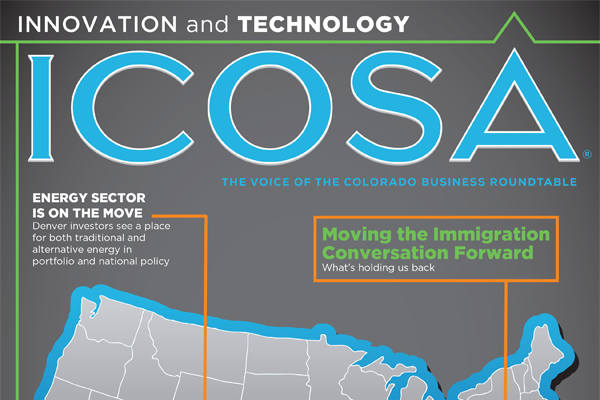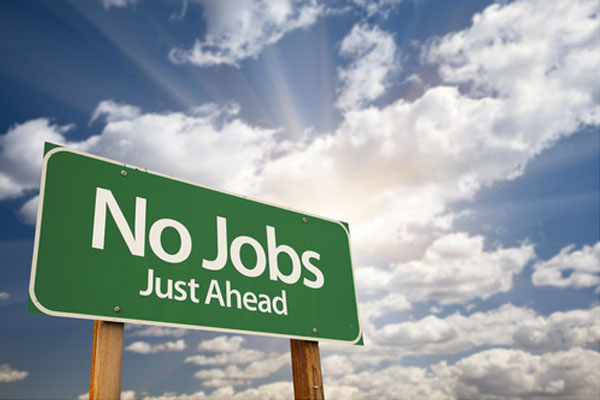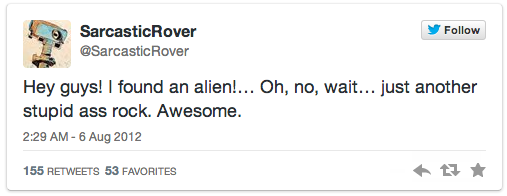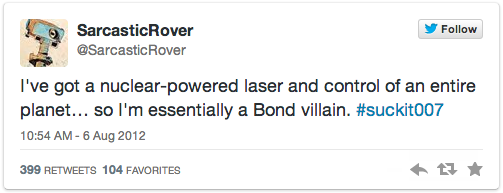Modern economic growth is driven by innovation and technology. In partnership with the Colorado Business Roundtable, this issue of ICOSA Magazine explores some of these topics in an attempt to inform and inspire leaders here in Colorado and beyond.
Why Did The SBA Just Gift Millions To For-Profit Businesses?
The SBA just gave away millions in corporate welfare with no strings attached, to venture- capitalists accelerators. This is wrong on multiple levels.
The U.S. Small Business Administration just announced the award of millions of dollars in grants to 50 "accelerators," which are designed for venture capitalists to sift through countless startups to find the few they think can make them money. But the rationale, efficacy, and fairness of this program all need to be challenged.
The Rationale--Accelerators Produce More Jobs (NOT)
Over the last decade, the SBA has shifted its focus away from the 98 percent of small businesses with 1-19 employees, to work with very large corporations with up to $36.5 million in revenue and/or 1,500 employees. This accelerator grant program is another example of that shift.
The SBA says accelerators produce a lot of jobs, but the evidence suggests the opposite. Over the last five years, the approximately 200 accelerators in the U.S. have created between3,300 and 4,800 jobs, or a measly 700 to 960 jobs a year, at a cost of $130,000 per job created. Small businesses add around 600,000 businesses and three million jobs every year, or an average of 15 million jobs every five years; all without handouts from the government.
The Efficacy--Accelerators Product High-Growth Companies (NOT)
The SBA says accelerators produce high-growth companies. The evidence suggests otherwise.
The best data on job creation from the Kauffman Foundation shows 100% of net new jobs are created in the first twelve months of a new business. 98% of those will never have more than 19 employees (and don't want more), and less than 00.06% have more than 500. And most importantly, nobody can figure out which startup will be the freak that will grow quickly. Not a single business that has gone through an accelerator program over the last couple decades has become "high-growth", and generated tens of thousands of jobs.
In contrast, McDonalds started as a hot dog stand in 1937, and didn't start growing until eighteen years later. It was not built to be big, "high-growth", or even make hamburgers. Accelerator owners would have laughed at it.
Sara Blakely designed and started selling panty hose from her apartment because she didn't like the way her panty hose fit. In a few short years, Spanx became a billion dollar company without the help of an accelerator, or even a single penny of outside investment. And no one, including Sara Blakely, could have guessed it would become huge.
In 1996, two college kids started a company called Backrub on their college campus server. Three years later they moved out of their garage and renamed it Google, which lived in obscurity in the backwaters of the Internet for another couple years. These kids would have never survived the "pitch deck" process to get into an accelerator.
The accelerators never recognized these or any others like them, and the overwhelming evidence is they never do. The fact is, good ideas don't need to be coddled. 81 percent of the fastest growing businesses in America never took a dime of venture capital, and those that achieved the highest financial return also took no vc money. Not one of the fastest growing businesses in America on anyone's list over the last twenty years has come through an accelerator.
Throwing free money at accelerators in not an effective use of SBA funds. They would be better off lending it to small business owners with interest.
The Fairness Issue
The SBA was formed to help small business owners get interest-bearing loans, not to give free money to wealthy vc's. One recipient of the handout, the Arizona Center for Innovation, is owned by Tech Parks Arizona, which owns 5.2 million square feet of commercial office space producing over $100 million a year in revenue. Do they really need a government handout to make more money?
Just as questionable, many other grant recipients formed their accelerator in the last few months, possibly just to get the grant. Some don't have a website yet. Some haven't even opened. One is a rental kitchen that opens this month and will rotate chefs in their for-profit restaurant area. How is that "high growth"? With no track record at all, the SBA is throwing money at all these, no strings attached. It's mind-boggling and a terrible investment practice that no accelerator with integrity would support.
How does any of this giveaway make sense? This is crony-Industrialism, and an affront to the millions of small businesses slugging it out in the trenches, who are more deserving, but won't see a dime of this giveaway. The SBA has a lot of explaining to do.
by Chuck Blakeman, Author of the #1 Rated Business Book of the Year, Making Money is Killing Your Business and Top 10 business book, Why Employees Are Always A Bad Idea
Article as seen on Inc.com
2 Years Later: A Look at Curiosity
"The first footfalls on Mars will mark a historic milestone, an enterprise that requires human tenacity matched with technology to anchor ourselves on another world" - Buzz Aldren
August 6th, 2012 - One of the most ambitious space missions to date went into action. The unmanned space rover, aptly named Curiosity, was set to land on Mars, all that was left was the trip. After the "Seven Minutes of Terror," Curiosity was to begin its mission into the Martian wilderness. Over the course of the two years, Curiosity has been active studying the Mars for signs of life and water, reporting diligently back to NASA. Armed with cameras and a rock-vaporizing laser, Curiosity has been shooting and rocks and taking pictures for two years now, and we've learned some pretty astounding things.
Thanks to the intrepid rover, we have evidence that there was most likely once water on Mars. We now know that life on Mars was possible given the history of the red planet, and we have an idea of where to search for it. Among the many things that Curiosity has discovered on its extra-terrestrial mission, the biggest benefit from the rover may be a renewed interest in the space program. From lego sets to t-shirts to its own Twitter handle, people are interested in what's going on on Mars.
Now, 2 years later, we get a look at what the time and elements have done to our beloved space-faring friend. And maybe, just maybe, we can one day send someone up there to go meet our rover buddy and thank it for all it has done for us.
Serendipity Brings Music Lovers Together
"Music does bring people together... No matter what language we speak, what color we are, the form of our politics or the expression of our love and our faith, music proves: We are the same." - John Denver
Whereever you travel, through whatever country, people can always connect through the shared experience of enjoying music. Everyday more and more people turn to online streaming services for their jams, creating a nexus point of musical diversity used the world over. There are already ways to make online music a more communal experience, but this newest one is something else entirely.
"Even though listening to music can be a very private experience, I wanted to see how often this experience is shared.” - Kyle McDonald
Spotify, one of the largest music streaming services, recently unveiled a map, that shows when any two people around the world are listening to the same song at the same time (within 1/10th of a second of each other). The map, named Serendipity, jumps from song to song showing the location of each of the listeners worldwide, and what they're listening to. It also gives you the option to pause, stop and listen for a while. This project, based on real-time data was created by Spotify's first artist-in-residence, Kyle McDonald. About the project, McDonald says “In person, it’s easy to see the features we share, or when we share stories in online discussions. But we’re also connected in more ephemeral ways, and we can extract these relationships with new tools. Even though listening to music can be a very private experience, I wanted to see how often this experience is shared.”
If you want to get connected with others through music,
check out Serendipity for yourself.
Why You Should Hire Stakeholders, Not Employees
Let's retire the idea of an employee. These days, your company needs something different.
The Factory System gave us cool toys and a cushy life, but it also came with business diseases, and one of them is the Industrial Age concept of the employee. That version is a very new idea in the history of man, and one that needs to go away. Let's replace them with Stakeholders.
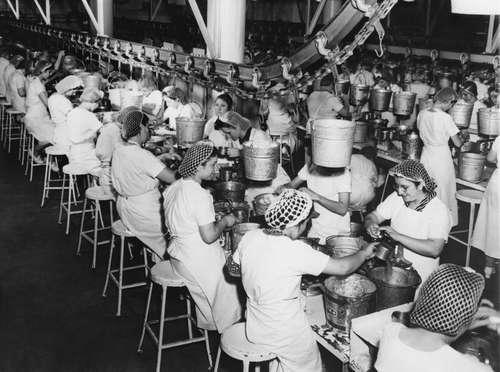 Employees Are Silent
Employees Are Silent
The Industrial Age recreated people as extensions of machines. If people left the messy, creative human part at home, they fit into the Factory System much better. Sadly, people adapted, to the point that the generation that entered the work force at the very peak of the Industrial Age (1945-1965ish) was given the worst generational label in history--The Silent Generation. They understood the Factory System mantra, "Be loyal to the company. Do what you're told. Show up early, leave late. Shut up, sit down, don't make waves, live invisibly, and go out quietly. The company will take care of you, from cradle to grave." They bought the promise hook, line and sinker.
Employees Are Children
This view of work (and life) turned adults back into children. The most respected person was one who obediently took orders, did what they were told, didn't question authority, was blindly loyal to those in charge, and lived passively as others directed their life. Pretty much what we want a five-year-old to do.
To keep the children from ruining the house, the Industrial Age herded people into company day care centers, penned them in with clear and narrow rules on performance and hours, and endless limitations on being human and adult at work. Machines didn't need them to ask why, or to create, or to solve problems. Machines just needed them to "do".
Childlike Employees Are Replaced By Adult Stakeholders
The notion of an employee is a business disease which turns people back into children, and it should be eradicated. Some companies can't even use the word anymore. They don't want to hire children who need to be supervised so that they don't run into the street. They want adults. Enter the Stakeholder.
Stakeholders bring the whole, messy, creative person to work. They can think, take initiative, make decisions, carry responsibility, take ownership, be creative, and solve problems. And they incessantly ask the most human of questions, "Why?" They are self-directed and creative, and they solve problems. They don't expect the company or other adults to take care of them.
Stakeholders Are Owners
Ownership is the most powerful motivator in business. Adults own stuff. Even if they don't own a piece of the company, Stakeholders own their work. And as Stakeholders, they receive profit sharing, just like an owner should. To create ownership, Stakeholders in Participation Age companies own some of the fruit of their labor.
Stakeholders Require Leadership, Not Adult Supervision (Management)
If you hire adult Stakeholders instead of childlike employees, it changes the way you lead people. Participation Age companies with Stakeholders don't have office hours, vacation time, or personal days. They're not interested in whose car was in the parking lot first or who left last. In these companies, Stakeholders don't need adult supervision, they need leadership.
Stakeholders Make Meaning and Money At Work, and More of Both
Industrial Age employees traded time for money, and then went home to Make Meaning. Stakeholders won't settle for a j-o-b that just pays the bills. They want to be able to go home at the end of the day knowing they made a difference, not just a product. And everyone is a lot happier because they all work with adults who contribute and pull their own weight.
In the Participation Age, employees are always a bad idea. Stakeholders will replace them. There is a growing wave of companies looking to replace employees with Stakeholders. Don't settle. Find one you can join, or build one yourself.
Come join us in the Participation Age.
by Chuck Blakeman, Author of the #1 Rated Business Book of the Year, Making Money is Killing Your Business and Top 10 business book, Why Employees Are Always A Bad Idea
Article as seen on Inc.com
Companies Without Managers Do Better By Every Metric
Participate and Share
Last week we described Participation Age companies - Stakeholders, who work in self-managed teams, replace employees; Leaders replace managers; there is profit-sharing for everyone, no work hours, etc. But how do they perform against traditional, management-centric companies with Industrial Age hierarchies?
Quite well, it turns out. They don’t just hold their own; they blow the lid off! Let’s start with tiny companies and work our way up to huge.
Crankset Group
Our little seven-year old company, Crankset Group, with 20+ full and part-time people grew 704% in the last five years, and growth is accelerating. Nobody reports to anybody; everybody is a Chief (Relationship Officer, Results Officer, Transformation Officer, Connecting Officer, etc.). Everyone leads in their area of expertise, and we all know exactly what result we are supposed to produce, and if you get the result agreed upon, nobody cares WHERE you are or WHEN you are. And everyone has the ability to grow, learn, start things, and make more money by expanding their impact.
Menlo Innovations
Menlo Innovations, a software company with over 100 Stakeholders, has a manager-less Participation Age culture, and is well known because its founder, Richard Sheridan, wrote a book called, Joy, Inc., that tells how they built a company with almost no hierarchy. They now have courses teaching other companies how to do it.
Valve Corporation
Valve, a software/game company has 300 Stakeholders. There are no managers. People transfer to other projects without “permission,” choose what to work on, decide each other's pay, and go on vacation for a week together every year (Hawaii last year). Valve is significantly more profitable per Stakeholder than either Apple or Google.
Semco Partners
Semco, a Brazilian company with 3,000 Stakeholders, made washing machines in 1951, but is now in multiple industries including real estate, banking, and web services. In a 10-year recessionary period in Brazil, Semco’s revenues still grew 600%, profits were up 500%, productivity was up 700%, and for the last 20+ years, employee turnover remains at an incredibly low 1-2% per year. They have no managers, no HR department, no written policies (just a few written beliefs) and no office hours. Everyone works in small, self-motivated, self-managed work teams who make their own decisions regarding salary, hiring, firing, and who leads the team for the next six months. There are no managers to involve in the process.
W. L. Gore, Inc.
W. L. Gore (Gore-Tex), with 10,000 employees has been a Participation Age pioneer, functioning without managers since the 1960’s. Stakeholders at Gore say it takes 6-12 months for new hires to believe there will be no manager looking over their shoulder. One Stakeholder said, “If anyone here ever told someone else what to do, no one would work with them again.”
Fortune 500s and Internationals
Thirty Fortune 500’s are also moving aggressively in the direction of being Participation Age companies and are growing an average of ten times faster than the average S&P 500 company over ten years. Forty-one other international companies and organizations comprise the WorldBlu list of “most democratic” manager-less companies.
A Big Duh
These examples just scratch the surface. The Participation Age company isn’t a fringe idea, but is the wave of the present. In ten years, this will all be a big “duh”. And those that don’t embrace the Participation Age will be left behind.
The results are in. If you want to make a bucket-load of money going forward, you will want to join the Participation Age, and replace managers with exponentially fewer leaders.
Next week we’ll look at the radical difference between the two, and how most companies that think they have leaders, actually have managers.
Article as seen on Inc.com
The Emerging Work World
Participate and Share
In the early 2000's, I read a riveting blog post by a young guy who talked about having to leave himself in the car every day as he went into work. It ended with, "And in the evenings I always hope I'll get off in time to come back out and reunite with myself... before I'm gone."
We are living at the intersection of two opposing work worlds, The Industrial Age, which is still strangely dominant in the front office of most companies. And the Participation Age, which is emerging as the new standard for how we work.
In the production area, we have replaced Industrial Age assembly lines and smokestacks with things like nanotechnology and clean rooms. But the front office looks pretty much the same way it did a hundred years ago, with managers in ties making all the decisions. These Industrial Age management practices, which recreated humans as extensions of machines, are colliding with the emerging Participation Age workforce that wants to Make Meaning at work, not just money.
The hallmarks of the Participation Age are simple, participation and sharing.
Companies are discovering that if they invite everyone to participate in the building of a great company, and to share in the rewards, both the company and the people, profit more. The Participation Age is also creating workplaces with a soul. This isn't woo-woo crap; these are hard-core success strategies. And it isn't a fringe idea. Those who embrace the Participation Age will thrive; those who don't will be left behind.
 What does a Participation Age company look like?
What does a Participation Age company look like?
Imagine a company with no departments, no corporate ladder or promotions, no HR department, and no written policies--just a few written beliefs. And with no managers, just a very few leaders, who lead because people are following them, not because they have a title on their door. Could you imagine a company with no office hours, even in manufacturing, with self-managed work teams who own the decisions they will have to carry out? Or unlimited vacation, and profit sharing for everyone? Is it possible this way of doing business would work better, for both the company and the people who work there?
Well the good news is this isn't something we have to imagine. Participation Age companies are springing up all around us, in every size, and in every industry. We have worked with many and have identified thousands that have either fully transitioned, or are racing to embrace the Participation Age as fast as they can.
To that end, managers (those who embrace authority and control) are disappearing in favor of exponentially fewer leaders (those who embrace participation and sharing).
And employees, who are treated like children, herded into Office Day Care Centers, and supervised, are being replaced with Stakeholders; self-motivated adults who are able to make decisions and don't need to be managed, just led.
To the leaders of some companies this may all sound like sappy HR stuff to placate the workforce. But in future posts we'll show how Participation Age companies outperform the overwhelming majority of companies still hostage to Industrial Age front-office management.
They grow faster, are more stable, have higher profits and higher productivity, and have exponentially lower employee turnover.
In future posts we'll look at many successful Participation Age companies, and we'll talk about how to find one to work for, or how to build one yourself. There are a few dozen giant corporations, hundreds of big ones, and tens of thousands of small to medium sized companies racing to embrace the Participation Age, or who are already there. Don't settle--find one you can join as a Stakeholder; or build one yourself.
The emerging work world is waiting for you. Come join us in The Participation Age!
Uganda Women Leadership Conference, Part 2
U.S. Ambassador DeLisi is hopeful as he and his wife celebrated a group of young Ugandan fellows at their residence who will spend the summer in the United States growing their global networks to build film schools, launch small businesses and pursue careers in human rights. The Honorable Minister Nsereko is hopeful about the public health partnerships we are forming together as she invited us to a ceremony in a rural province where they distributed some of the $400 thousand worth of medical supplies that we shipped over in partnership with Project Cure. And there is even hope for me that I will learn from my mistakes as my iPhone was stolen out of my hands once again as I sat in a cab with my window down in a Kampala traffic jam at night on the way to the airport. There is hope that next time I will roll up my window like the taxi driver suggested! Later that evening, I was reminded over a Skype back home that despite the “tragic” loss of my iPhone someone will at least eat better this week from its sale on the black market; a potent reminder that my very worst day is many people’s best.
The hope at the reception that the First Lady of Rwanda hosted for the Women’s Leadership summit as we arrived in Kigali was palpable. A parliamentarian, a deputy chief of staff, a minister of youth services, the head of a foundation, all gathered to greet us; all women. These are powerful women making positive change in a country with one of the largest percentages of women in parliament in the world. There is hope that my own country can humble itself to learn from Rwanda where in 2014 there should be more than one woman running for President. Jus’ sayin’!

The 300 children from the local villages that we hosted at Entusi on the second day of our summit for a basic health clinic arrived with hope that someone would pay attention to them. And we delivered. Everyone left with something. More importantly, every child who made their way through the clinic felt important and felt welcome. They had a seat at the table. For many, this was the first time they had been ever invited anywhere.
And so, our Second Annual Women’s Leadership Summit concluded yesterday and as 20 extraordinary women began making their way back to their families and their work in Kampala and Kigali and Colombia and Nigeria and the United States, Africa had changed each of us. It always does, right?
Despite the enormity of the challenges that confront us from girls in captivity to the unforgiving conditions of poverty; despite the very different backgrounds and life experiences of each of the women who came together over this past week; everyone left with something in common. They all left with hope.
On Lake Bunyonyi at the Entusi Retreat Center on June 11th, there was a sense of hope that was so pervasive and so thick that you could almost touch it.
Uganda Women Leadership Conference, Part 1
Two days ago at Entusi, one of the women leading the “Bring Back Our Girls” campaign from Nigeria told her story at the Second Annual Women’s Leadership Summit. Florence wants to know why the world community can activate vast pools of resources in an international search to find a missing airplane and the tragic disappearance of hundreds of people with families and friends who want them home; but is not as inclined to activate and engage those same resources to find hundreds of missing girls in Nigeria with family and friends who also want them home.
And at the end of her very compelling, impassioned talk the women sitting around the table all reacted differently. Not surprising as we had a most extraordinary delegation of women leaders this year from Uganda, Rwanda, Nigeria, Colombia and the United States. Some shed tears; some were angry; some were vocal and others were very quiet and reflective. But here’s the deal. When you cut through all of the emotion that filled the room on this very extraordinary morning on Lake Bunyonyi in Southern Uganda, there was one common thread that tied us all together. And that was hope. And it dominated us.
I started to think back on my month here in East Africa teaching an interactive graduate class with students from the University of Colorado Denver and hosting our Second Women’s Leadership retreat at Entusi. And with each story and each interaction, hope seemed to be the common theme this time around at every stop.
We found hope when we ventured into the Katanga slums, where the absence of public health is almost as pronounced as the raw sewage that runs through the community. And I ran into a family I have known there for years. The mom invited us into their home. Her two-year old daughter wanted a balloon animal and her elderly Mom needed some medicine as she is dying of cancer. But what she really wanted me to know is that she just got a job. And in the midst of the chaos in which this family lives, this woman had hope.
We found hope when we traveled North to Lira and visited with the young adults who are former child soldiers. Despite the tragedy and despair rooted in their past, many of them are moving on with their lives. One girl is in her senior year of high school and over lunch we told her that we were going to support her to pursue her career in nursing when she graduates. Walter moved back with his mom and is finishing high school in the village where he is originally from.
And everywhere in Kampala, despite the poverty and corruption and typical dysfunctions of the developing world, hope was there as well, albeit subtly. It was at Halals, where my Muslim friend Eddie runs the best local restaurant on the planet. Business is good and the rice, beans, g-nut sauce and chipatti’s are to die for. Based near the slum, you can feast over an amazing meal and orange Fanta and get out the door for less than 5,000 schillings ($2 USD). Simon has graduated from college after four years of support from the Global Livingston Institute and has his first job working for an international business. Martina is in her final year of college and is going to help manage the new campus that we have acquired in Kampala.
Connect & Collaborate - CU Impact on Economy
Connect & Collaborate takes an in-depth look at the impact the University of Colorado system has on the state economy and our future as a whole. We are fortunate to have CU not only for the education of our students, but because the school is a a leader in research, enterprise and innovation. Those qualities combine to drive the state economy by creating new companies and jobs, while attracting industry leaders to the state. Together with our Co-host, John Brackney, we talk with Don Elliman, Chancellor of CU Denver and Anschutz Medical Campus, on the ability to commercialize CU research to build industry partnerships; Steve VanNurden, President and CEO of Fitzsimons Redevelopment Authority on the impact of the CU Anschutz Medical Campus on healthcare and the economy; Diane Dimeff, the Executive Director of CU- Boulder's Espace Initiative on the role of aerospace, student recruitment and research, workforce development and industry partnerships.
The University of Colorado has become an economic driver, with millions of dollars in research funding, impacting job growth which ultimately impacts the local economy.
"The CU system does almost $800 million in sponsored research, right now, today. Roughly fifty-percent of that is in Boulder. There is some in the Springs <sic>. There is some in downtown Denver. But Boulder and Anschutz are at about the same level the high $300 million each." ~ Don Elliman
The CU Anschutz Medical campus is a hub of world class research, employing 22,000 people in three different hospitals and research facilities, with a unique ability to combine education, research and commercial businesses all in one place.
"What I want to do, is be able to make that shorter connectivity between the research and the marketplace." ~ Steve VanNurden
CU leads the way for innovation in the aerospace field as well. At CU-Boulder, Diane Dimeff heads the Espace initiative including the Center for Space Entrepreneurship which is the hub for a number of workforce development, and business incubator aerospace-related programs. Among them, the CU-led MAVEN mission which studies the atmosphere and volatile evolution of Mars - and brought in $671 million in research dollars.
"Through this mission, the state of Colorado received $300 million in funding. With that, of course, an enormous number of new jobs that have been created and if you add those new jobs and the salaries they created, and then the sort of multiplier effect of them going ahead and buying products and services within the state of Colorado, the total economic impact of this MAVEN project alone, much less the University's is something like two billion dollars." ~ Diane Dimeff
When we look at the leading players in economic development, we can't overlook the CU system. CU contributes to the state's future in more ways than we see on the surface.
Listen Saturday at 10:00 AM on KNUS 710 – Please let us know what you think of our program, either by commenting here or on Facebook at Connect & Collaborate with ICOSA or join the discussion on Twitter @ICOSAMagazine.
John Brackney is the Director of Strategic Community and Governmental Engagement at Webolutions, The Strategic Marketing Agency. He has a combined 26 years of Public Policy and Community Problem Solving experience as the former CEO of the South Metro Denver Chamber, as a former Arapahoe County Commissioner and as a former Army National Guard Officer. John received his law degree from the University of Denver, Sturm College of Law and a B.A. Political Science from the University of Northern Colorado. John and his wife are lifelong residents and natives of Colorado, are approaching their 25th wedding anniversary, and have two daughters.
Starto-The Ideation Episode
This week on Starto.... Work from Home Woes, Find the Pain, Ideation!, Trendmapping
all that and more....
Here are the resources we mentioned on this episode:
Does Innovation Only Happen In The Office? http://www.forbes.com/sites/petercohan/2013/02/26/4-reasons-marissa-mayers-no-at-home-work-policy-is-an-epic-fail/
Yahoo responds to controversy over work-at-home ban
http://mashable.com/2013/02/27/yahoo-work-at-home/
Trendmapping
http://www.icosa.co/2012/10/how-to-predict-the-next-big-start-up-trend/
FIND THE PAIN http://www.forbes.com/sites/theyec/2012/09/28/how-to-find-a-million-dollar-business-idea-in-minutes/
Follow Us on Twitter @StartoTV
Like us on Facebook StartoTV
Subscribe to us on iTunes Starto-The Show for the Worldwide Entrepreneur
Send us your suggestions for upcoming episodes- [email protected]
Innovating Yourself and Your Business
Innovation is a term thrown around a lot in today’s business world. Companies want to innovate and change, to adapt to what consumers and customers need. Most companies miss one key element—in order to innovate, a company must have leaders who also believe in innovating themselves. Identifying who you have become, accepting both the good and bad of this, and committing to change other behavior requires courage. Being innovative means being vulnerable—not a trait that many think is positive. However, learning to be vulnerable will propel you to the next phase, as a person and in your career. People respond strongly to leaders who are human—those leaders who admit their faults and embrace growth.
In the most basic sense, to innovate means to change. It’s one thing to talk about innovating or changing your business strategy, but what about innovating or changing yourself? Most people have a feeling of fear if not downright resistance to this idea. But innovating yourself does not mean changing who you are on a fundamental level, it means re-examining who you are at this moment, and who you ultimately want to be. And the hardest part of this is innovating in an authentic way.
People often come to me because they have climbed the corporate ladder and yet they feel a sense of loneliness or emptiness. I also receive a lot of requests from leaders who feel disengaged or “not themselves” in the role they play at the office. This often comes out in their inability to excite the organization to tackle changes, in personal fatigue or in some more serious cases, illnesses. The first thing I help leaders do is hold a mirror up to themselves and take an honest look at what they see.
Who You Are: Holding Up a Mirror
It’s not easy to see a gradual change process. Our values, vision, wants and needs may be different than what they once were. For the first decade of our professional lives, most people seek a job that aligns with their degree and the path they chose as a young adult. But as time goes on, experiences open up different opportunities and different things that we didn’t even know existed. Often the values we cling to are aligned with the person we were when we identified them, not with the person we are today. And one day you may realize you are looking at things a little differently. Perhaps it is election time, and you realize you are not voting down your party line. Or maybe it’s when you apply to that job that is the logical next step in your career, and you are filled with a sense of dread, not excitement.
This step of the development process is one of the hardest for leaders to undergo. It requires an open mind and self-compassion. To do this, you need to look at your leadership style as you see yourself, your style as others see it, and re-examine your values.
How Do You See Yourself?
Self-assessments such as Myers-Briggs, DiSC, or Insights are a good start, but they are only your view of who you are. I recently facilitated a team effectiveness session to the senior leaders of a large oil and gas company. As part of this session, we used Insights as both a self-assessment and then a 360° version where other people determined their characteristics, leadership and communication styles. Eight of the 12 leaders saw themselves with different styles than others saw them!
How Do Others See You?
A more realistic view of who you are is a true 360° assessment, where others rank you and make comments on specific behaviors that you feel are important to your leadership style and effectiveness. As a coach, self-assessments and 360s show me how the person sees himself, and who he would like to be. It shows me the behaviors that the person thinks makes her successful because most people do not purposefully admit or see behaviors that they know are unacceptable.
Values
When I work with executives, I push people to identify their current values, and I force them to look to see if they are living these values. I was working with a senior VP of human resources. She pointed to a picture of her two young children, smiled and proudly proclaimed family her top priority. Yet she worked a minimum of 70 hours a week, including weekends and evenings. If a value is real, you use it as your compass and the basis for all of your decisions.
Who You Want to Be
Ask any emerging leader to describe characteristics that make a leader, and the list will undoubtedly include “gets results” and “takes charge.” Yet if you ask these same young leaders who they would follow, the characteristics they identify are usually different. The traits they describe are usually more about collaboration than command, respect rather than dictating.
You must decide for yourself who you want to be, and how you want to be seen as a leader. I frequently have clients describe and define “professional,” including describing in detail how professional people behave, what they say, and how they make decisions. This usually gives me an indication of the person they have modeled themselves after. Next, I have them describe someone whom they would follow to another company or another team. We then compare the two. An amazing realization often occurs—the former is whom they thought they wanted to be, and the latter is whom they themselves are really wanting to become.
It is important to be honest with yourself about who you want to be. If you try to fake being someone you are not, others will know it. Your true feelings about what you are doing will leak nonverbal cues, and people will consciously and subconsciously pick up on it. If you have been told that you need to be more focused on people, you may ask them about their weekend, or their child’s soccer game. But are you truly listening to the answer, or are you only partially listening as you check your email?
How to Get There
Take an honest look at the difference between who you are now, and who you want to be. Keep what has worked in the past, as long as it still serves you. Your competitive nature has gotten you results and success, but is your company and your position requiring collaboration? If so, you must work with the rest of the organization and colleagues. A lone wolf reputation may work for an individual contributor but not for a leader of a department or organization.
Scientists have watched different areas of the brain light up in response to certain thoughts, and they consistently come to the same conclusion about change: We try to avoid it. If you are serious about being innovative with yourself, make an action plan with timelines. Just as you need employees to support an initiative, you must have someone who will hold you accountable and support you as you change.
Innovation in your company cannot occur if you are not innovating yourself. These suggestions give you a great start in doing just that.
How Do You Start the Next Great American Company?
Starto Shorts: Great Companies are created by great entrepreneurs, this week we talk to Brad Feld & David Cohen about how you create a thriving entrepreneurial ecosystem in your community. Brad Feld dropped by the garage to give us a sneak peek at his new book StartUp Communities: Building an Entrepreneurial Ecosystem in Your Community, he explained one of his key ideas called The Boulder Thesis. Brad suggests that taking a long range, 20 year view and staying invested in your community will get you some pretty amazing results.
We also took a trip behind the scenes at Tech Stars, met some of this year's founders and sat down with David Cohen to learn more about what the last six years of working with new start ups has taught him.
Sleeping Bag That Saves Lives
Often the most remarkable change is borne from the simplest solution. We have to clear our minds of the advancements we're familiar with, in order to visualize a new way of doing things. Jane Chen, was working with non-profit organizations on health care issues in developing countries when she became determined to find a way to help low birth weight babies stay alive. Low birth weight is often fatal, because the infant exhausts all it's energy in an attempt to stay warm, depriving itself of the energy needed to grow and develop normal organ function. Worldwide, 20 million babies are born with a significantly low birth weight, and four million of them die each year. The ones that survive have significant health problems due to their precarious start.
The answer lies in providing enough warmth. Consistent warmth. More than a mother's body heat can provide. In America, the standard solution is placing such a baby in an incubator, to keep them warm, and reduce risks of infection. But hospital incubators have a $20,000 price tag and require electricity to operate. Not the most practical solution in developing countries.
 They need something cheaper, portable, and reusable. So Chen developed something that looks like a baby sleeping bag, with an insert made of a special wax that can be heated and reheated, and maintains it's temperature for 4-6 hours. It's easy to clean and sterilize, and more importantly it is easy for any parent to use, even parents who can't read instructions.
They need something cheaper, portable, and reusable. So Chen developed something that looks like a baby sleeping bag, with an insert made of a special wax that can be heated and reheated, and maintains it's temperature for 4-6 hours. It's easy to clean and sterilize, and more importantly it is easy for any parent to use, even parents who can't read instructions.
It's called the Embrace Infant Warmer and can be produced for about twenty-five dollars. Already, it's design has saved more than 50,000 babies. Now, they just need more of them available for babies, and in the arms of mothers. All that's needed is to get this brilliant idea in front of more people.
Just last week, at a Gucci Charity event, celebrity singer Beyoncé Knowles donated a quarter of a million dollars to Embrace Innovations, to fund a pilot project in Ethiopia, Ghana, Kenya, Malawi, Mali, Nigeria, Rwanda, Senegal, Tanzania and Uganda, bringing the Warm Embrace to possibly 1,900 underweight babies who, without it, might not live.
It's innovation like Chen's and the generosity of so many others like Beyoncé that can make a difference. If you believe in this kind of progress, maybe you can donate too.
Read more here.
Colorado’s Collaboratory
Collegiate rivalries get a lot more headlines than collegiate collaborations. The media’s focus on collegiate competition is as true in Colorado as it is across the nation. But here in Colorado, the reality is that we’re home to one of the nation’s strongest university collaborations, made even stronger by the participation of an internationally acclaimed federal laboratory. The Colorado Energy Research Collaboratory is a six-year-old research consortium among the Colorado School of Mines, Colorado State University, the National Renewable Energy Laboratory (or NREL, a U.S. Department of Energy lab) and the University of Colorado Boulder. Independently, each of the four institutions has world-class clean energy research programs. Together, the four institutions comprise the most powerful clean energy research center in the world.
A Uniquely Successful Collaboration
The Collaboratory was formally launched in January, 2007, with three principal goals: to create and commercialize clean energy technologies, to serve as an economic driver for the State of Colorado and to train the next generation of scientists and engineers in energy disciplines. Nearly seven years later, the Collaboratory continues to thrive and expand.
The Collaboratory began to take shape in early 2006, with multi-institutional and bipartisan support from the outset. Then-Senator Ken Salazar invited the leaders of NREL and the three universities to engage in a conversation about collaborative research. Former Senator Hank Brown, then serving as the President of the University of Colorado System, immediately offered his support to the effort, as did the leaders of CSU, Mines and NREL. With the commitment of all four institutions, the Colorado General Assembly—with the critical support of Governor Bill Owens—enacted legislation to provide state funding to be used solely as “matching funds,” which were essential to attract federal research funding.
The state funding provided between 2007-2009 played a critical role in the success of the Collaboratory. In total, the General Assembly provided $6 million over the course of those years. From January, 2007 through the end of 2012, the Collaboratory employed that $6 million to attract more than $50 million in federal, industry and other private funding to the Colorado institutions and the Colorado economy, a return to the state of more than 8 to 1, making good on the Collaboratory’s commitment to serve as an economic catalyst for Colorado. That was only the beginning.
Outstanding Research Drives Economic Development
Federally funded research grants to Collaboratory institutions include advanced biofuels, algal biofuels, new materials for photovoltaic cells, the physics and chemistry of geologic sequestration of carbon, and, most recently, the potential to use beetle-killed timber as feedstock for the production of biofuels.
Industry funded projects have focused on renewable energy technologies such as the production of fuels and industrial chemicals from biomass (wood chips, crop residue, algae, etc.), solar and wind power, and research to reduce the adverse environmental impacts of fossil fuels by capturing and sequestering carbon dioxide and other gases that contribute to climate change. Over the past seven years, more than 50 companies have engaged with the Collaboratory institutions in these research efforts, from small Colorado start-ups to Fortune Global 100 companies, including: Abengoa Solar, Applied Materials, Ascent Solar, Chevron, ConocoPhillips, Cool Planet, Dow Chemical, DuPont, Ecopetrol-IPC, General Motors, Gevo, Kimberly Clark, Lockheed Martin, Mitsubishi, OPX Biotechnologies, Rentech, RES Americas, Sharp, Shell Global Solutions, Suncor, Sundrop Fuels, SunEdison, Tokyo Electron, Total, Toyota, Valero, Vestas, WindLogics, W.R. Grace, Weyerhaueser and ZeaChem.
In the coming months, the Collaboratory will launch new cooperative research efforts in energy storage technologies, such as batteries, fuel cells and thermal storage for electricity generation. And, in the coming year, the four institutions will commence collaborative research focused on energy systems management, improving both reliability and efficiency at all scales – from heating, cooling and providing electric power within a single building, to ensuring the reliability, efficiency, security and sustainability of regional power grids.
As our research portfolio has expanded, so too have our research partnerships. The National Oceanic and Atmospheric Administration (NOAA) and the National Center for Atmospheric Research (NCAR), both based in Boulder, have partnered with the Collaboratory, and we include respected researchers from nearby universities on a project-by-project basis.
- What’s the Magic?
The Collaboratory succeeds because of the strong commitment from the highest echelon of institutional leaders to the youngest faculty members and research professionals in each institution. A mutual respect prevails among the researchers at the four institutions. Not surprisingly, talented researchers are anxious to work with others who share their interests. Recognizing the potential benefits, the leaders at NREL and the universities have given their researchers the green light to enter into research activities with their peers at the other Collaboratory institutions, and the researchers have enthusiastically embraced these opportunities.
As Coloradans, we sometimes take for granted the shared commitment and mutual respect that are so much a part of our communities and our daily lives, but these are the qualities that allow the Collaboratory to succeed. In my conversations with colleagues outside of Colorado, representatives of more than a few states have commented that we’re lucky in Colorado – the public universities in these other states simply won’t cooperate. We’re fortunate in Colorado to have leaders at our universities and at NREL who understand that collaboration is the pathway to stronger institutions and to a vibrant innovation community. And we’re blessed with political leaders who value and foster this collaboration.

